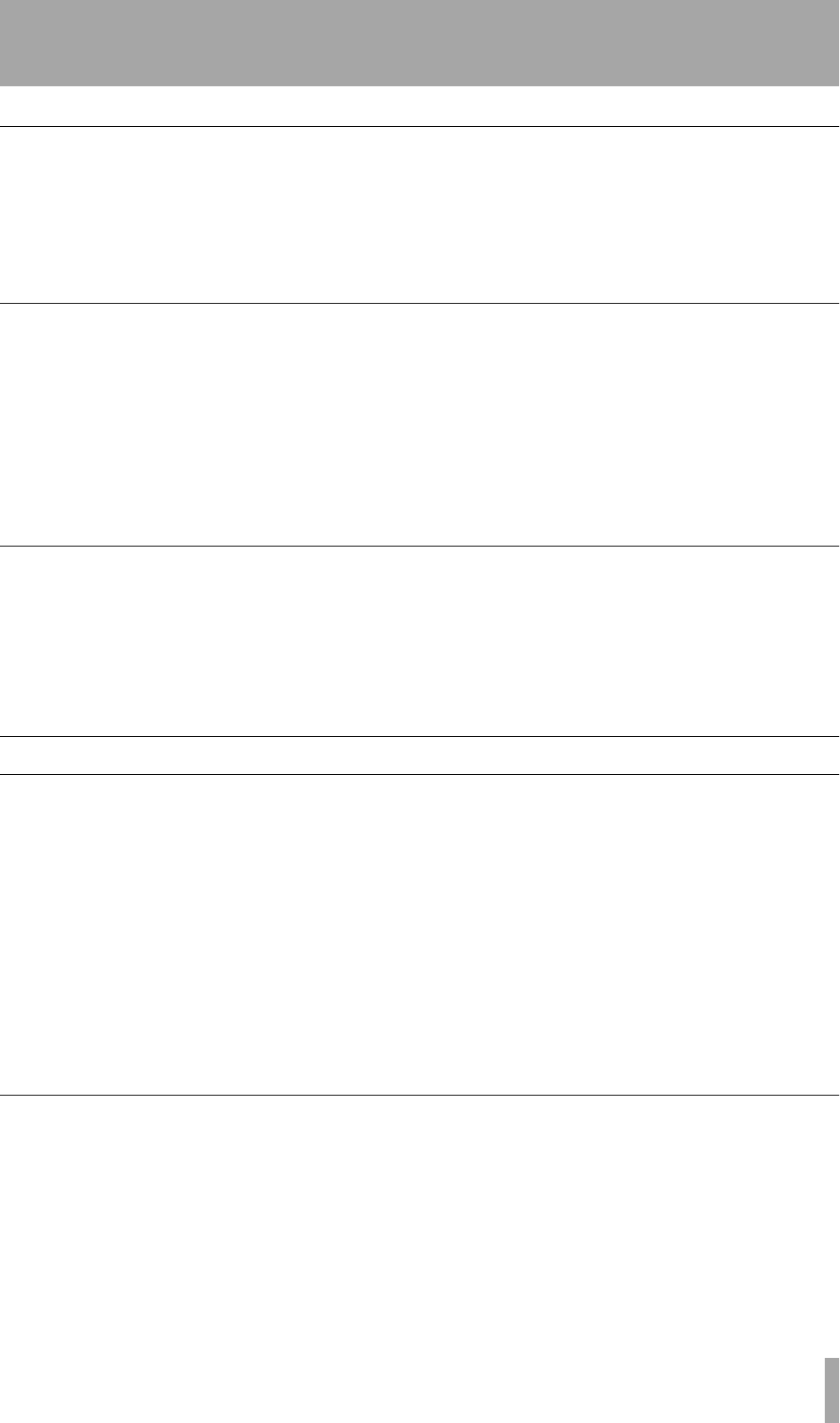
1 – Introductory concepts–Assignment
TASCAM 788 Digital PortaStudio 13
Multi-take punch-ins on the 788
Similar to the concept of “virtual tracks”, and also to
the editing procedure above, is the idea of multi-take
punches.
The 788 allows you to repeat a punch-in section,
playing or singing the same phrase many times until
you stop the punch procedure. All the successive
takes of this phrase are stored on disk, and you can
audition them all, and pick the best one to insert into
the track.
Instant location on the 788
With a tape recorder, you must always wait a certain
amount of time before moving from one part of a
song to another. This is because it takes time for tape
to be wound or rewound (even with the fast DTRS or
DAT systems, moving between the start and end of a
repeated section takes a definite amount of time).
However, a disk-based system like the 788 does not
need to rewind, and therefore if a section is being
looped, the start can follow immediately after the end
section. This can be a little unnerving for musicians
brought up on tape systems, and so the 788 allows
you to set the period between the end and the start,
simulating a tape rewind time.
You can set many location marks throughout a 788
song, allowing you to jump instantly around even the
longest pieces of music.
Recording technique
Remember, the 788 is a tool which helps you create
recordings. Although it has many features which will
assist you in making high quality recordings easily,
the use of a 788 (or indeed, of any piece of equip-
ment) does not in and of itself guarantee a perfect
recording.
Above all else, we encourage you to learn to listen
critically to your recordings—this will enable you to
make the most from your equipment and add to your
ultimate enjoyment.
Assignment
When recording signals on a multitrack system, the
outputs of the signal sources (microphones, instru-
ments, effect returns or previously-recorded multi-
track tape tracks) must be plugged into the
appropriate channels of the mixing console and
assigned or routed to the appropriate destination.
When recording the first tracks, the destination will
usually be the track or tracks of the multitrack
recorder on which the signal will be recorded.
In the mixdown phase of a project, the destination
will usually be the stereo pair to which the tracks will
be mixed (usually on another recorder).
In a conventional system, to change (say) a micro-
phone signal from input channel 1 of the mixer to
input channel 4, it is either (in a small setup) neces-
sary to unplug the microphone from the mixer and
reconnect or (in larger setups) to use a patchbay,
where all the inputs and outputs are permanently
connected at the rear of a “patch panel” and links are
made using patch cords on the front. Digital patch-
bays are also available for the connection of digital
signals.
The 788 internal patchbay
With the 788, no external patchbay is necessary. The
unit incorporates its own digital patchbay with many
advanced features. The techniques of actually mak-
ing the assignments in this internal patchbay are
explained in more detail in “Assignment on the 788”
on page 36. This section provides a brief overview of
the facilities available when using the assignment
patchbay of the 788.
The illustration here tries to show that although the
sound sources may be connected to the same inputs
of the 788 throughout a session, the signals from


















